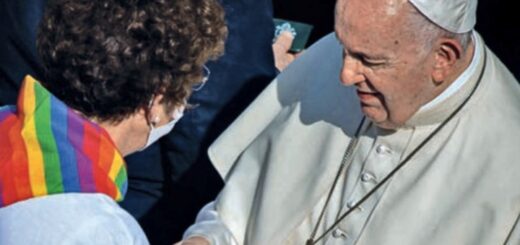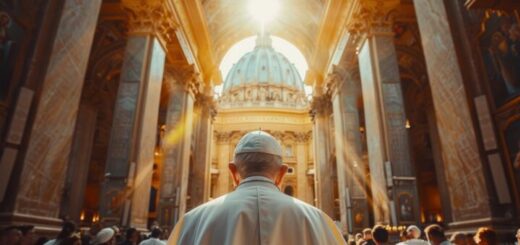The historical Jesus and the Christ of faith: an open debate
Reflections* by Henri Persoz** published on the website of the Protestant monthly Évangile et Liberté (France) on 26 June 2018, freely translated by Giacomo Tessaro
The divinity of Jesus has long been a problem for the Churches and the great Councils of Nicea (325) and Chalcedon (451) did not really clarify the question, because they used abstract terms that each understood differently, depending on their culture. So, for example, the Greek word homoousios can be read as of the same substance, Or of the same essence, or again of the same nature. Even the word upostasis can refer to substance or person. Between substance, person and nature, the conclusions of the Councils were not univocal, on the contrary, they complicated the issue even more, so that the disputes, excommunications and violence continued for centuries.
Even today, some theologians see in the New Testament the affirmation that Jesus is God, while others, on the contrary, see it as its denial. Clement Romanus writes around 120 in his second Epistle: “Brothers, we must think of Jesus Christ as God”: This shows that, at the beginning of the second century, the divinity of Jesus was not accepted everywhere. My feeling is that this idea began to spread widely in Christianity at the very beginning of the second century.
An evolution perceptible in the New Testament
Paul, who writes between the 50s and 60s, never confuses Jesus and God. For the apostle, Jesus is the Messiah announced by the prophets, a Messiah who in no case is God. After all, how could he have been resurrected if he had been God? The gods do not resurrect. When Paul writes in 1 Corinthians 11:3 “the head of the woman is the man, and […] the head of Christ is God”, establishes a hierarchy, debatable as far as you want, but which demonstrates that for him Christ is not God. Evidently, the term Lord (Kurios), which Paul uses to designate both God and Jesus, lends itself to confusion. The term above all shows the respect due to the two characters: the master of the house and the emperor are also Kurioi.
The Synoptic Gospels, written between 70 and 90, speak little of a Jesus who would be God; the apocryphal Gospel of Thomas talks about it even less. We must therefore turn to the Gospel of John, in particular its prologue; but this Gospel was written precisely at the end of the first century, and in that period the idea of a Jesus-God had made its way in some circles. The Johannine school develops a sort of fusion between God and Jesus, and when the latter declares “I have proceeded and come from God” (8:42) one may ask whether it is Jesus or the evangelist speaking. The Johannine Jesus is much more “united with the Father” than the synoptic one.
In any case, starting from the second century and for a long time, opposing doctrines coexisted, which denied the divinity of Jesus or his humanity, with all the intermediate hypotheses. As we have said, the great Councils found compromises so as not to undermine the unity of Church and Empire and imagined that Jesus could be both true man and true God, but they had difficulty convincing all of Christianity of this. Today we can realize that the problem was poorly posed.
Which Jesus are we talking about?
The ancient Church did not pose the problem of the historicity of what is told in the Gospels. A distinction was not possible between the Jesus told by the Gospels, the one told by the Church and the Jesus of history, as the Scriptures and the writings of the Church were at the same time spiritual and historical truths. The very expression of “historical Jesus” was inconceivable.
The question began to arise shortly before the Enlightenment era, when historiographical science and the critical study of texts developed; an attempt was made to distinguish, within the texts, historical memories from what were instead later developments that were to serve as spiritual truth. In the 17th century some enlightened theologians began to say that there was a difference between the historical Jesus and the one presented by the New Testament, but they remained alone and unheard. It is especially in the 19th century that many German Protestant theologians, grouped under the general term of German liberal school, they took the problem head-on, not wanting Christianity to escape the dominion of reason; they then began to rebuild some “lives of Jesus” with the help of the new techniques of historical criticism. The criticisms of this first wave, especially from Rudolf Bultmann and Albert Schweitzer, centered on the fact that this method did not exclude a certain degree of subjectivity, given that every theologian tended to find in the texts the Jesus who suited him.
What can be considered certain today, both by historians and liberal theologians, is that a certain Jesus went through history and an incredible religious movement developed from him, but that it is very difficult to know precisely what he did and said. . The Gospels are documents of faith, not reports of precise historical facts, which the authors did not know first-hand, given that they were not part of Jesus' retinue. We must therefore distinguish between the historical Jesus, who existed but who we do not know, and the Christ of faith, who can take very different forms depending on whether one follows the Gospels, the Epistles and, a fortiori, the Churches and theologians.
To the point that, when asked whether Jesus was God or a man, we could answer: who are we talking about? As for the historical Jesus, the one who really existed in the flesh, who we can only approach through the opaque veil of the New Testament writings, I turn to reason. Jesus is not distinguished from us by the constitution of his person, he belongs to the same human species as us, to the same ontological class. He was nothing but a man. Of course, he was close to God, more than many others, he passed on to us an exceptional Word, indispensable if we want to make man better. But he was a man. Subsequently, starting from this evident reality, dictated by reason, the nascent Churches and the various forms of Christianity built their faith, to the point of deifying Jesus, who became the Christ of faith.
In summary, the historical Jesus was a man; the Christ of faith has become, for some, a God. This expression, however, has uncertain contours: what is God? And what is a man who is also God? Most of our contemporaries do not know how to distinguish between the historical Jesus and the Christ of faith: what the Churches usually say has not taught them anything about it and, since they cannot accept that a man is also God (along with many other things still), flee from the Christian religion; since they flee from it, they cannot be aware of the modern concepts that we have summarized here. It's a vicious circle.
* The biblical passages are taken from the New Riveduta version.
** Henri Persoz is a retired engineer. At the end of his career he undertook comprehensive theology studies which allowed him to defend, even better than he already did, his very liberal approach to Christianity.






